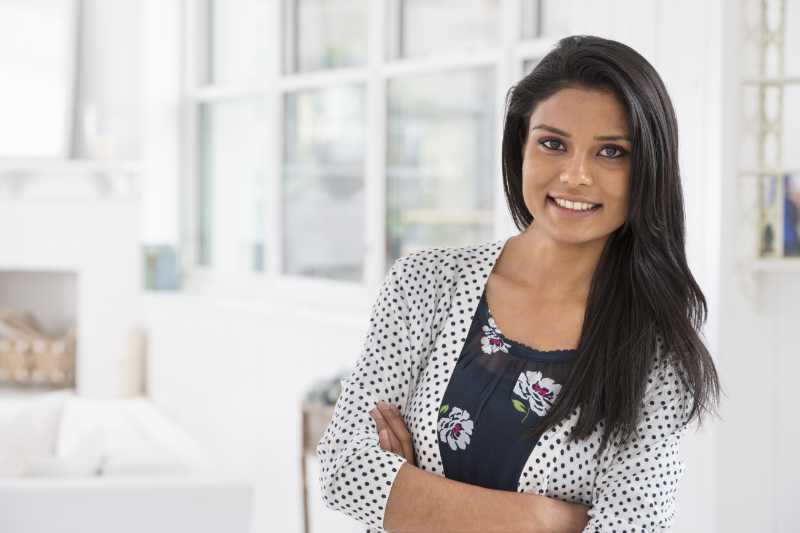
Headshot photography has a huge demand nowadays. Lots of people around the globe looking for some photographers to take professional headshots for a variety of motivations.
This type of photography opens the door for talented and creative persons to start their businesses and earn real money. Yeah, it is a competitive niche but at the same time, it's fairly affordable to start with. Ant you could spend as little as several hundred dollars to start by buying a decent camera.
The good news is - it's not so hard to boost your knowledge in headshot photography. Want to become a professional freelance photographer quickly? Let's talk about how to improve your headshot photography techniques.
What is a Headshot Photography?
I consider headshot photography as one of the quickest and easiest ways to become a professional commercial photographer. Headshots as a certain photography niche were you suppose to film a person with focusing on his face.
But humans unconscious always pays attention to the eyes of others (aka faces). So we could assume that almost every person can take an accurate headshot instantly without any mistake.
That's why I find headshot photography is suitable for beginners who are interested in the photography business in particular.
Portraits are part of headshot photography. The headshots focus mostly on the face, including with head and shoulders. Portrait photography, on the other hand, can be a full-body or waist-up. It is used in a more creative or artistic way.
The headshots are mostly used formally. Corporate photography is the typical example where photographers use headshot photography techniques.
There is a massive market for headshot photography because of the high demand for a headshot. It could be photos for:
- business owners
- company's employees
- application forms
- resumes and job applications
- passport or visa
- models
- artists or actors
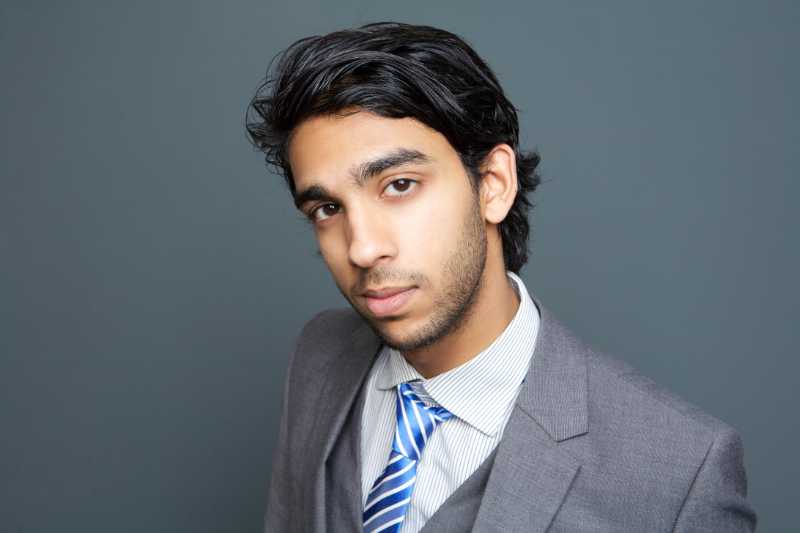
So, in commercial terms, headshot photography helps people recognize a particular person and is widely used for marketing purposes.
Indeed, headshot photography applies to different companies' business websites. Also, there are more and more professional headshot photography is used for different social media platforms. Either for forums or other web profiles on the internet.
The Most Essential Headshot Photography Techniques You Should Learn
Framing Your Headshots is Making Your Photos More Attractive!
This photo tip is about enhancing the main subject in your headshot photography by framing it - as when you put a frame around a picture on a wall to enhance its appearance. The difference here is that we put the framing element inside the image itself, as a part of the scene.
How To Frame Your Shots

This can be a very effective strategy in many situations, especially in headshot photography. Like for example when shooting a portrait. Then making sure you have something rather close to the camera which is the distant scene, enhances the sense of depth in the picture a great deal.
Pictures of distant scenes can otherwise look quite flat and boring since we don't see a picture of something distant in the same way as we do when being there, and using our own eyes.
When we do that, we have a stereoscopic (three-dimensional) view, which we can't get in a photograph - unless it's a whole image designed to be viewed with special glasses.
As you can see in the picture here, this framing can be done in many ways! The subject of interest and the frame can be put at the same distance from the camera with excellent results.
Taking Advantage of the Framing of your Headshots
In many cases the framing element is a part of a building, such as a door frame; or it can be an archway or a pair of pillars. The framing element does not have to go all around the picture in every case - often it is fine if the main element is framed on two sides only; either vertically or horizontally.
The framing of the subject can be done in several ways. And what is the point of doing it?
Here is a list of a few advantages of headshot framing:
1. - Framing the subject can provide a stronger sense of depth in the picture. As in a shot of a distant portrait which otherwise may look rather flat and feel like a disappointment compared to the actual scenery.
2. - Framing can add interest to the picture by adding information about the place, as in the picture above.
3. - Framing the subject serves to draw the interest of the viewer into the picture; it seems to act like a visual barrier that somehow locks your attention in the scene.
Compare this effect to an ordinary picture frame - why do we like to put frames around pictures we display on a wall? One reason is the frame keeps our attention from wandering away from the picture and over to something else - like the pattern on the wallpaper!
Take every opportunity to frame your subjects, find creative ways of doing it. Frame through windows, doorways, arches or people by shooting pictures in the space between them. You will find that it often adds considerable interest to your headshot photography that otherwise may have been rather bland and boring.
A Good Composition Will Make Your Headshot Photography Looking Like a Pro

When trying to give you, the reader, something useful and simple, I guess a good point to start your professional photography journey is giving you some photo tips about composition.
Putting all technical stuff aside, for now, just put your attention on how you see the object you're trying to capture in the viewfinder of your camera.
The idea is that you can make your headshots so much more interesting if you focus your conscious awareness on how you're framing whatever it is you capturing before pushing the camera trigger.
There are many aspects to this, for now, let's introduce the first rule in the book:
Meet the Rule of Thirds - The Most Important Rule Among the Professional Photographers!
Imagine you divide the scene you see through the camera's viewfinder into three parts, both vertically and horizontally, like this:
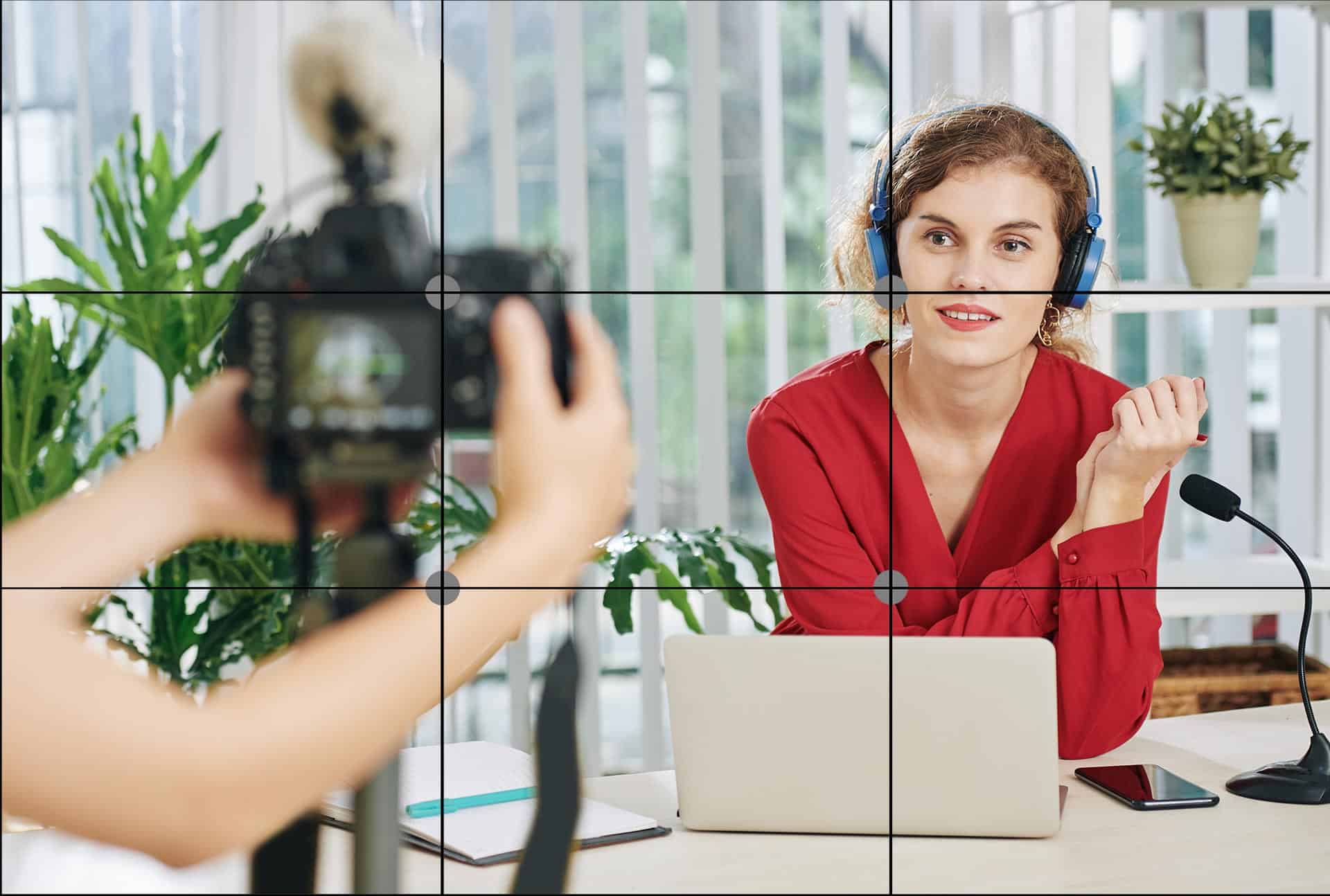
It is much easier to show than to explain in words...
Note that the intersection of two lines falls right near the middle of the picture! And feel the tension and sense of movement created by all that space to the left!
The idea behind this old rule is that a picture usually becomes more interesting if the major, dominating, elements are a bit off centre.
Rule of Thirds in Action
The Rule of Thirds is a simple tool to help you avoid the boring habit of putting everything smack in the middle of every picture. Instead, keep imagining those lines, running as shown above, and try to place your object of interest somewhere along those lines.
This will introduce a sense of movement in your headshot photography (and not only). Imagine a portrait of a person for instance.
Put her right in the middle - what do you feel when you see that? Is she going anywhere? No, it seems she has already arrived!
But put her off-centre, at either of the vertical lines. Then what? Well, she may be on her way into the picture, or disappearing out of it (depending on which way she is positioning her body).

Every time you are about to snap your headshot, ask yourself: “How can I use the Rule of Thirds to make this picture more interesting, with more of a sense of movement? Keep doing that and I'm sure your headshot photography skill will improve visibly.
Take for instance the horizon, implemented in the picture. It so happens that it is exactly two-thirds of the way up! You shouldn't plan it that way. Instead, you should do it by instinct.
If you had put the horizon exactly halfway up, dividing the picture into two equal-sized halves, the result had been felt as more static; less dynamic.
Note also that putting a massive dark form very much off centre, with nothing but the light-coloured sky or the water surface in the rest of the image, could have created an off-balance feeling. Like every rule, the Rule of Thirds needs to be used with common sense.
Filling the Frame - The #1 Rule of Thumb for your Successful Headshot Photography!
A famous photographer once said, when asked how to make a great picture: If it ain't good enough - you're not CLOSE enough! This, in a nutshell, is often what makes the difference between a ho-hum boring picture and a stunning masterpiece.
Sure, there is more to it than that but the simple act of actually filling the frame with your main subject of interest usually makes a huge difference. So, I think this photo tip is an important one for headshot photography indeed.
How do You Get Close? (Two Ways of Getting Your Perfect Headshot)
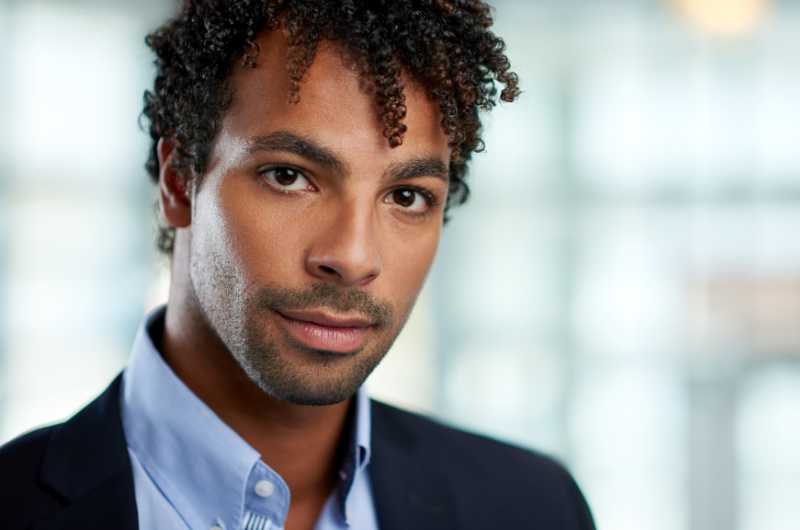
There are two ways: either you bring the camera closer to the subject, OR you use the zoom function to zoom in closer.
Almost all digital cameras have zoom lenses nowadays, the only exception is if you have a very advanced digital SLR camera with interchangeable lenses, then you may choose to put a fixed focal length lens on the camera.
Why do wildlife photographers typically use those huge telephoto lenses? Well, it is because wild animals usually don't want to get too close to humans!
Therefore, if you want to get close to a wild animal you in most cases need to zoom in, that is: use a long focal length lens.
Surely, headshot photography has nothing to deal with wildlife photography. But sometimes, you have some circumstances when you are not able to get closer to the object.
Say, if you are into sports photography and want to get a nice closeup headshot of the action. You don't walk into a tennis court to snap pictures of the players, right? No, you have to stand somewhere outside the court and try your best from there.
Moreover, keep in mind that if you want to have a more blurry background of your headshot, you have used your zoom lens to achieve the result either. Honestly, there is another way to make the background of your portrait blurry. And this is the aperture on your lens.
But this is a little bit more advanced technique and we will discuss it on a different topic later.
How to Avoid Some Problems in Headshot Photography When You Are Zooming In?
On the technical side of things, using a telephoto setting means you need more light; while at the same time the picture is more vulnerable to blurriness. This blurriness happens in two ways:
1 Camera movement,
2 Incorrect focus.
If you use the other method for getting close, you have much fewer problems with these kinds of blurriness. So, my general advice for filling the frame is: just bring yourself and the camera closer to the subject!

Use a Perspective Effect to Take a Perfect Headshot (The Secret Formula of Professional Photography)
A perspective effect is very simple to achieve, but not a lot of people know about this:
What is closer to the camera appears larger than what is farther away.
In most cases, this perspective effect is a desirable one, in my opinion. We can feel how close we are to the object. And part of this feeling is conveyed by the perspective effect.
If the picture had been taken at a distance, using an advanced SLR digital camera with a long telephoto lens, and thereby been able to fill the frame of the object, the resulting image had been very different from the closeup shooting without zooming. It would have been much flatter, almost like a cardboard cutout, and would not have conveyed the same sense of presence.
The reason is, again, the great distance between the photographer and the object. Due to this distance, as said above, every part of that object is at about the same distance from the camera.
And even the longest telephoto lens in the world won't change this fact.
Yes, it is easy to think you can make a fantastic headshot. If only you have this or that advanced telephoto lens - but the reality is it is much more difficult to make good pictures with a lens like that; both for technical reasons, as mentioned above, and for more aesthetic ones.
Sure, in some cases you don't want the kind of effect seen in your headshot photography. Note how exaggerated the size of the nose appears here! This is because of the short focal length, wide-angle setting, used.
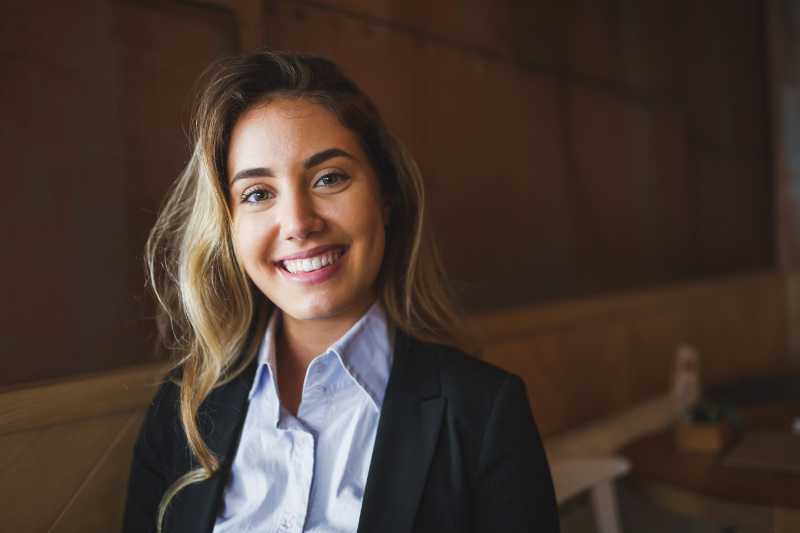
Flatter your Headshots to Make it More Natural
In headshot photography, to make a more flattering portrait, use a little bit of a telephoto setting instead. Not an extreme one, but just enough to avoid exaggerating the features of the face.
If the face is not filling the whole frame but only a minor part of it, then you can use a wide-angle setting width for good results. It seems we much easier accept a distorted appearance with other parts of the body such as arms and legs, than with the face.
In Conclusion
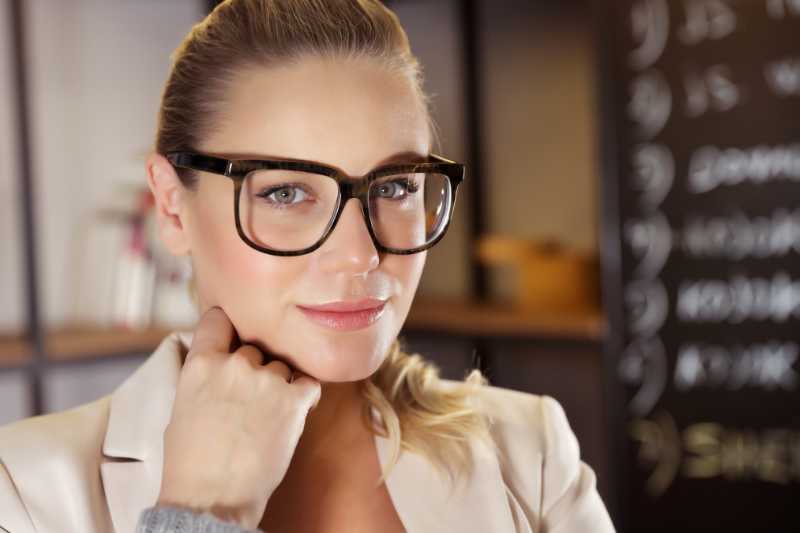
There are lots of details that we are not able to cover in one article about headshot photography. But these simple tips will help you to make your first steps. And hope, eventually it will lead to success.
The main and simple advice I would like to give is, just go out and take an action. Without practice, you will never achieve the expected results.
Even in this, simple to conquer professional photography niche as headshot photography. Try to practice with your friends or family members and you will quickly notice the positive result and gain self-confidence.
After this, you will be ready for the next step - to find the client. And this leads to another obstacle with their learning curve called - business marketing. But this is another story and a different topic. Good luck with your professional headshot photography!